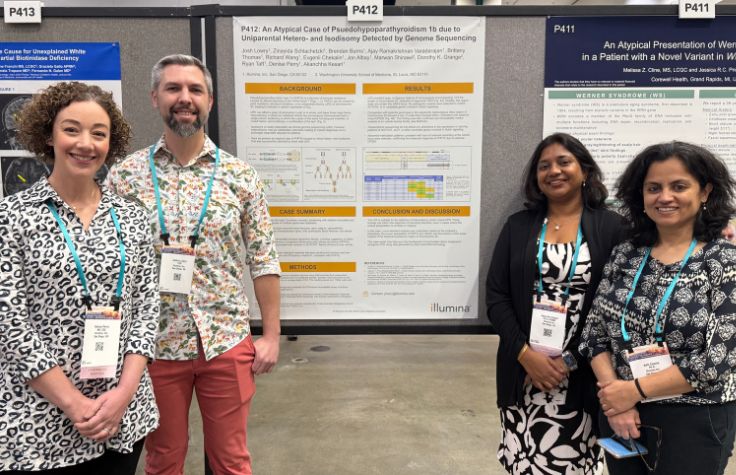
July 29, 2024
You’ll find domestic cattle nearly everywhere on Earth, but they won’t always look like the milk-carton mascots you’re probably familiar with. Especially on family-owned farms and in small herds, cattle breeds can differ greatly depending on their region. These local breeds are often better adapted to their ecosystem’s temperature and food supply, and more resistant to its pests and diseases.
Compare them to commercial breeds, like the Holstein Friesian. This iconic black-and-white cow originated in northern Holland and was selectively bred for milk production in its mild marine environment for thousands of years. On paper, Holsteins seem like the best investment a small dairy farmer can make to maximize their profit—but they don’t thrive as well in a hotter tropical climate that holds pathogens their bodies aren’t prepared for. And if farmers crossbreed commercial animals with their local herd, successive generations may lose some of the herd’s previously unique beneficial traits.
Richard Crooijmans believes there’s great potential in local cattle breeds, and that the secrets of their desirable adaptations lie in their genome. He’s an associate professor of Animal Breeding and Genomics at the Netherlands’ , project leader and one of six primary investigators of , a cattle sequencing project that received the 2024 VR���˲�Ʊ Agricultural Greater Good Initiative grant.
Reading the secrets of environmental adaptation in the genome
OPTIBOV’s goal is to comb through the genomes of cattle breeds from vastly different latitudes and identify the biomarkers that have made them better able to shoulder their individual environmental stresses—and the rising temperatures and invasive diseases that have spread due to climate change. Crooijmans explains: “As humans, we change the world very fast, and animals have to cope with that. Normally, the range of adaptation was very slow, but over the last 50 years, animals have had to adapt much faster to cope with higher temperatures.”
The project’s scientists have collected DNA samples from the blood, milk, feces, and from nasal swabs of 640 individual cattle in six countries: Finland, the Netherlands, Portugal, Egypt, Uganda, and South Africa. Five animals per country represented commercial breeds, and the rest were from local herds. They also collected information on the quality and quantity of the animals’ diets, their health status, and the temperature of the animals and their surroundings.
They’ve already begun sequencing this data using VR���˲�Ʊ technology, and with the support of this grant, they hope to enlist additional PhD students to analyze it. Beyond the animals’ genomes, they also intend to study everything else captured in the samples: The composition of the animals’ gut and airway microbiomes, and any viruses or other infectious agents present. This should paint a clearer picture of what’s contributing to their overall resilience.
Ultimately, OPTIBOV will produce a metadata analysis compiling all the adaptation biomarkers they find: The single-nucleotide variants, the structural variants, and the insertions and deletions to the animals’ actual genetic code—as well as their epigenetics, or the ways that environmental factors have changed the ways their genes are expressed.
Equipped with this information, smallholder farmers could be better informed about which cattle to buy and to breed, to improve their productive qualities without sacrificing their health and longevity, fitting their ecosystem.
OPTIBOV is one of 27 projects undertaken by the LEAP-Agri consortium, a long-term partnership between countries in the European Union and the African Union. LEAP-Agri was launched by the AU-EU High Level Policy Dialogue on Science, Technology, and Innovation in 2016 to contribute to the , to “End hunger, achieve food security and improved nutrition and promote sustainable agriculture.”
Food security builds healthier communities
As part of VR���˲�Ʊ’s Corporate Social Responsibility program focused on integrating sustainability, the Agricultural Greater Good Initiative grant has been awarded annually since 2011 to projects supporting research into food security and sustainability. The award recognizes OPTIBOV’s potential value in informing small farmers’ herd management decisions.
Crooijmans believes strongly in preserving the world’s variety of traditional, local cattle breeds. He acknowledges that selective breeding for more resilient animals in a specific ecosystem is a long-term investment, but the more we know what biomarkers we’re looking for and understand the impact of genetic changes, the more successful that investment will be: “We have to be realistic to farmers that this is not something we can solve next year—but if we have this information, we can move forward in applying the knowledge. We have to see what is reachable.”
Especially for small farmers in Africa, having strong, healthy animals is an economic foundation that helps ensure they can feed their families and send their children to school. If this project can help their cattle live longer and have a more productive life, the beneficial effects ripple outward into their communities and to society at large.
“I like variation, both phenotypic and molecular,” Crooijmans observes. “That’s why I think local breeds are of extreme interest—but they are still underestimated and poorly studied. We have to conserve them for the future. It’s not a coincidence that those animals are there; they already survived all kinds of things in the past.” ◆


